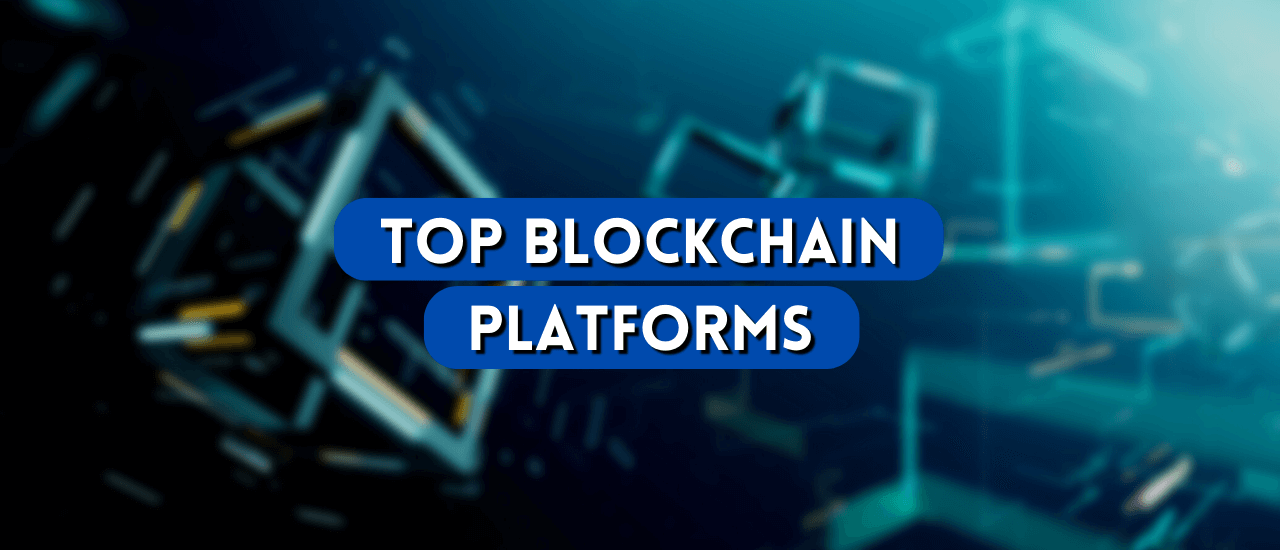
Top Blockchain Platforms in 2022
Introduction
The need for blockchain platforms has been growing significantly to simplify trade, improve traceability, streamline supply chains and improve the overall financial transactions. Thus, modern blockchain platforms are developed to help businesses overcome their limitations and add better practical value to their day–to–day operations. Blockchain experts believe that blockchain platforms hold the potential to disrupt legacy technological processes and supply chain management businesses.
Key Features to Consider for Choosing Blockchain Platform in 2022
Blockchain platforms have a wide range of features that allow enterprises to select the appropriate blockchain considering its varied capabilities. Such as identifying whether the platform is a public or private blockchain as it affects the speed and security at large. The public blockchain is open for all. Therefore, it becomes easier for small business to users to set up their ventures using the public blockchain. However, these public blockchains do not work as fast as private blockchains.
Understand what consensus mechanism blockchain platform uses. Some of the popular consensus mechanisms are POW, PoS, or Byzantine Fault Tolerance. POW is the oldest mechanism that is used in Ethereum and Bitcoin. While the other consensus mechanisms are newer and considered more efficient and faster. Furthermore, considering the privacy level of the blockchain and the cost involved in running the blockchain are of key importance.
Popular Blockchain Platforms to Build Business Applications
Several blockchain platforms are becoming the topmost choice of businesses across the globe. These blockchain platforms come with distinct features and use cases and serve the needs of many business organizations.
Ethereum
This blockchain platform was introduced in the year 2013 and is considered the most established blockchain network. It offers a truly decentralized blockchain experience that is backed by smart contract technology. However, this blockchain platform suffers from slow processing time and higher transaction costs compared to other platforms.
However, the platform has wider use cases and underpins enterprise applications such as decentralized applications or dApps on its network. To address its speed and cost challenges, the Ethereum blockchain plans to migrate from POW to PoS consensus, where the latter is more energy–friendly, which will reduce energy consumption by 99.95%. Thus, the upgraded Ethereum blockchain network i.e. Ethereum 2.0, has emerged with remarkable improvements.
IBM Blockchain
It is a private decentralized blockchain network that is proficient in dealing with enterprise clients who are less risk–averse. Thus, this blockchain network is able to link enterprise cloud and legacy technologies more seamlessly. This blockchain tool was designed to offer flexibility and make applications more customizable and functional. As a result, it is a user–friendly interface capable of simplifying critical tasks by rapidly deploying smart contracts. So far, this blockchain solution has played a significant role in streamlining financial services, banking, and supply chain management.
Hyperledger Fabric
It is a set of tools that is helpful in creating blockchain applications. Powered by the Linux Foundation, this blockchain network has a rich ecosystem that can be plugged into a modular architecture. Furthermore, it works well with the closed blockchain deployment, facilitating improved security and speed. Besides this, it supports the smart contract models comprising various data models, unspent transaction output, etc. The Hyperledger Fabric offers improved data privacy by isolating transactions in the different channels, which further enables sharing of private data and offers high-speed transactions along with less storage requirement.
R3 Corda
This blockchain network uses a novel consensus mechanism where transactions are cryptographically linked but does not batch transactions into the block like other blockchain platforms. However, R3 Corda is popular for processing transactions in real-time, which is the strength it has over other types of blockchain. R3 consortium is largely preferred by the financial industry as it provides attractive features for facilitating financial transactions along with smart contracts that offer strong security. Recently, the group launched a technical preview of Corda Payments to simplify the distributed payment capabilities into apps.
Stellar
It is a recent introduction in the blockchain world, which supports various Defi applications. This blockchain network uses a stellar consensus protocol to speed up the process of transaction execution with utmost security. Stellar has been adopted by companies for supporting international trade and facilitating money exchange across borders. Some of the applications that have used stellar blockchain are MoneyGram for money transfer, Circle for providing treasury and payment infrastructure, and Flutterwave for integrating and processing payments.
EOSIO
This open-source blockchain project was first launched in the year 2018 to develop decentralized applications and smart contracts. Furthermore, EOSIO uses a complex consensus mechanism that is based on PoS and provides better performance. So far, around 400 applications have been developed, including identity management, gaming, and SCM. Additionally, the EOSIO community provides various tools to customize blockchain implementations and offer multiple decentralized uses in the healthcare and DeFi ecosystem at large.
ConsenSys Quorum
It is a customized version of Ethereum that is developed by a renowned financial services company named JP Morgan. Quorum blockchain takes advantage of the original Ethereum blockchain platform and repacks it in a way that suits the banking environment. Thus, this blockchain network supports high–speed transactions between various financial institutions on a private network. Thus, ConsenSys has positioned its blockchain offering as the way to accelerate the development of enterprise applications that support Ethereum –based tools in the long run.
Final Words
The introduction of multiple blockchain platforms in the Web 3 space has certainly given rise to huge competition, especially for the Ethereum blockchain network. However, the upgraded version of Ethereum has made its environment more mature, giving it an edge over other blockchain platforms. Furthermore, several private blockchain platforms have come up with a more optimized and efficient interface to streamline the specific industry requirements. Thus, all forms of blockchain networks serve the needs of various industry types and the nature of businesses. All businesses need to do is understand the factors affecting their business objectives.
